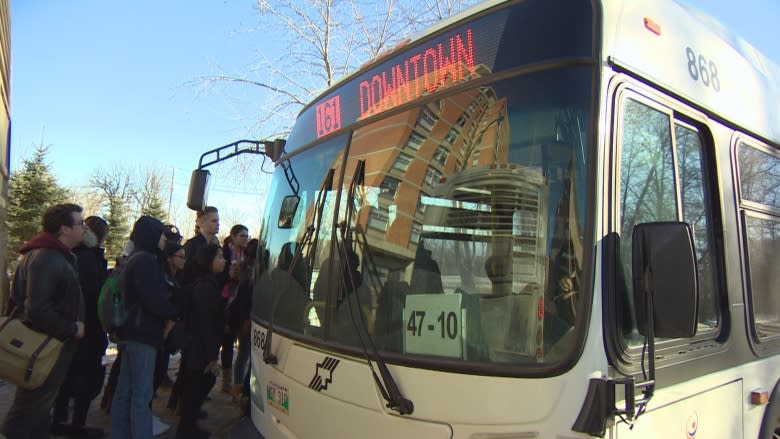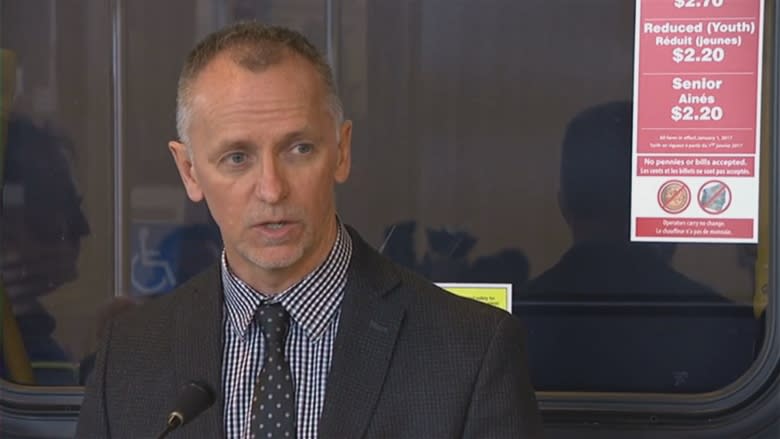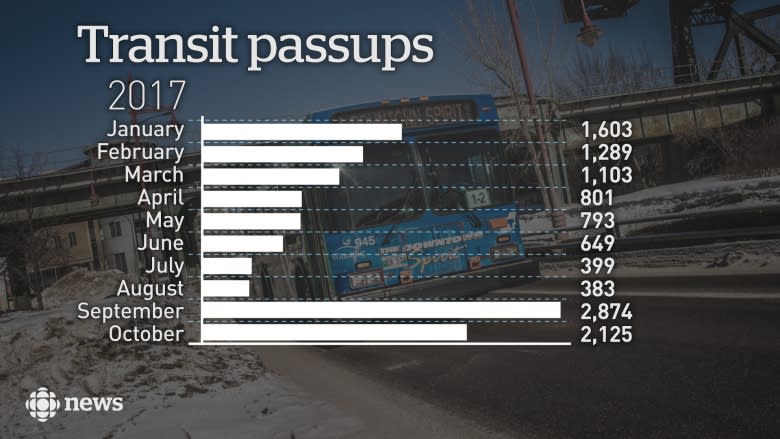Transit union to city: Use smaller buses or Uber-like apps instead of cutting service
Winnipeg's transit union says the city should consider using smaller buses, devising flexible routes and moving to service on demand in some area instead of just cutting back on service along routes with lower ridership.
The city is contemplating less frequent bus service on up to 23 Winnipeg Transit routes next June in order to save money. Mayor Brian Bowman announced the potential cuts as one way of dealing with flat provincial transit funding, which has been frozen at 2016 levels.
Acting Winnipeg Transit director Greg Ewankiw said those routes could be characterized as mere candidates for service reductions, as it's not yet clear how many will be affected.
The routes with the lowest hourly ridership, particularly at off-peak hours, are the most likely candidates to be cut back, he said.
"We're obviously looking to have the least impact for our customers. We have a little more analysis to go, but we obviously have identified 23 routes," Ewankiw said.
Amalgamated Transit Union international vice-president John Callahan said simply cutting back on service makes no sense when the city could operate smaller buses, utilize technology to offer transit service on demand and change up routes more frequently.
"It's not going to work for everyone. Not everyone has a smartphone. Not every one has access to an app, but there are areas it could work. It's something we need to speak about and to work towards," Callahan said Friday in an interview.
"We're still doing the same old fixed routes. We need to look beyond that. We have some really good planners there, some schedulers. They just need the green light."
Barry Prentice, a transportation expert and professor at the University of Manitoba's Asper School of Business said simply reducing service in outlying areas is no solution for people who rely on some form of public transit.
"I don't know of anybody who's ever shrunk their way to greatness," said Prentice, who also likes the idea of deploying smaller buses and operating transit in a less rigid manner.
Prentice said the provincial-funding crisis represents an opportunity to conduct a radical Winnipeg Transit makeover. Winnipeg Transit ought to prioritize service in the inner city and other central neighbourhoods where there's a higher population density — but not by just cutting elsewhere.
"Maybe they should be focusing more on really good service for the people who will use the transit and move to something more like a dial-a-bus service for people outside that area," he said.
The city also has an opportunity to better co-ordinate transit service with taxis and other vehicles for hire, Prentice added, noting Winnipeg is about to take over regulation of the vehicle-for-hire industry from the province. The city could begin regulating taxis and other vehicles for hire on March 1.
Companies such as Uber or Lyft could aid transit, rather than harm it, by giving commuters the confidence to take transit downtown, knowing they have another means of attending meetings or appointments outside downtown, he said.
"They can actually be complementary," he said.
Improving transit service along busier routes would mean reducing the number of passups: times when an overfull bus can't stop to pick up more passengers.
Winnipeg Transit strands more passengers at the start of the fall and winter university semesters, according to data provided by transit.
"It's super-frustrating. You're standing there waiting for the bus. It sucks to be passed over," said Ben Collins, a graduate student at the University of Manitoba.
He said it doesn't make sense to cut back on transit service while the city invests in transit infrastructure such as bus corridors.
Fellow U of M student Alex Kurys said when overfull buses pass her by in the morning, she usually has to wait about seven minutes for the next bus, which is long enough to get cold in the winter.
She said he is not entirely confident in the reliability of Winnipeg Transit service.
"There's a lot of buses that aren't that full and almost all the ones coming to the university are always packed," she said.
Acting transit director Ewankiw said transit inspectors hit the streets at the start of each semester and adjust service times in an effort to ensure there are fewer passups. Sometimes that just involves moving an emptier bus ahead two minutes to overtake a full bus, he said.
Callahan said the city could simply buy more used buses to meet demand at peak times.
He said Winnipeg Transit is not just being inflexible, but will not say what routes are on the chopping block.
Ewankiw said it would be premature to identify the 23 candidate routes before council approves the 2018 budget.
The president of the Winnipeg chapter of the Amalgamated Transit Union said the uncertainty has some city councillors calling his office, hoping to learn what routes are on the chopping block.
"We have no idea. I've tried to call transit what those routes are and they have no idea. The councillors have no idea," Aleem Chaudhary said in an interview.
"Cutting service on those routes, in the evenings and weekends, you're going to frustrate people. People are already waiting for service as it is, and if you cut the service, instead of waiting 20 minutes, you're waiting an hour," Chaudary said.
"You're pissed off, here comes the next bus and who are you going to take it out on? The first person you see. Who is that? The bus driver."










